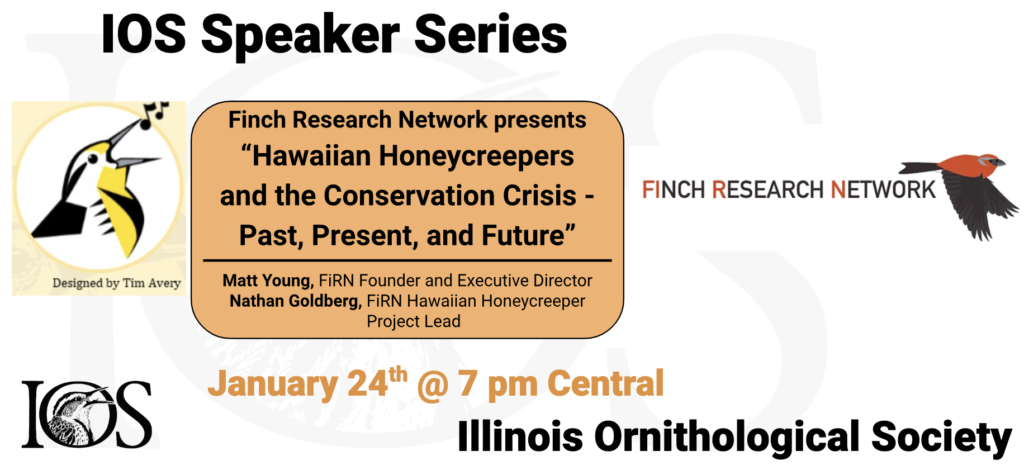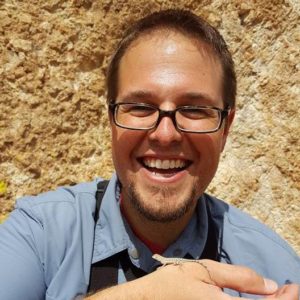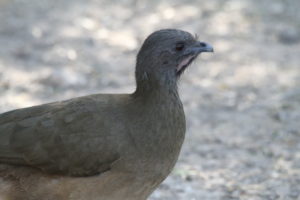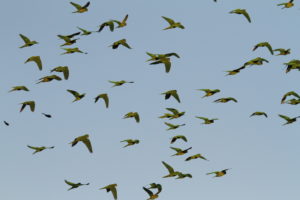Chicago Piping Plover Summer 2024 Intern reflects on her experiences
Jessica Cortez worked to promote conservation efforts and raise awareness about our Piping Plovers and other birds that use the Montrose Beach and Dunes through her education outreach
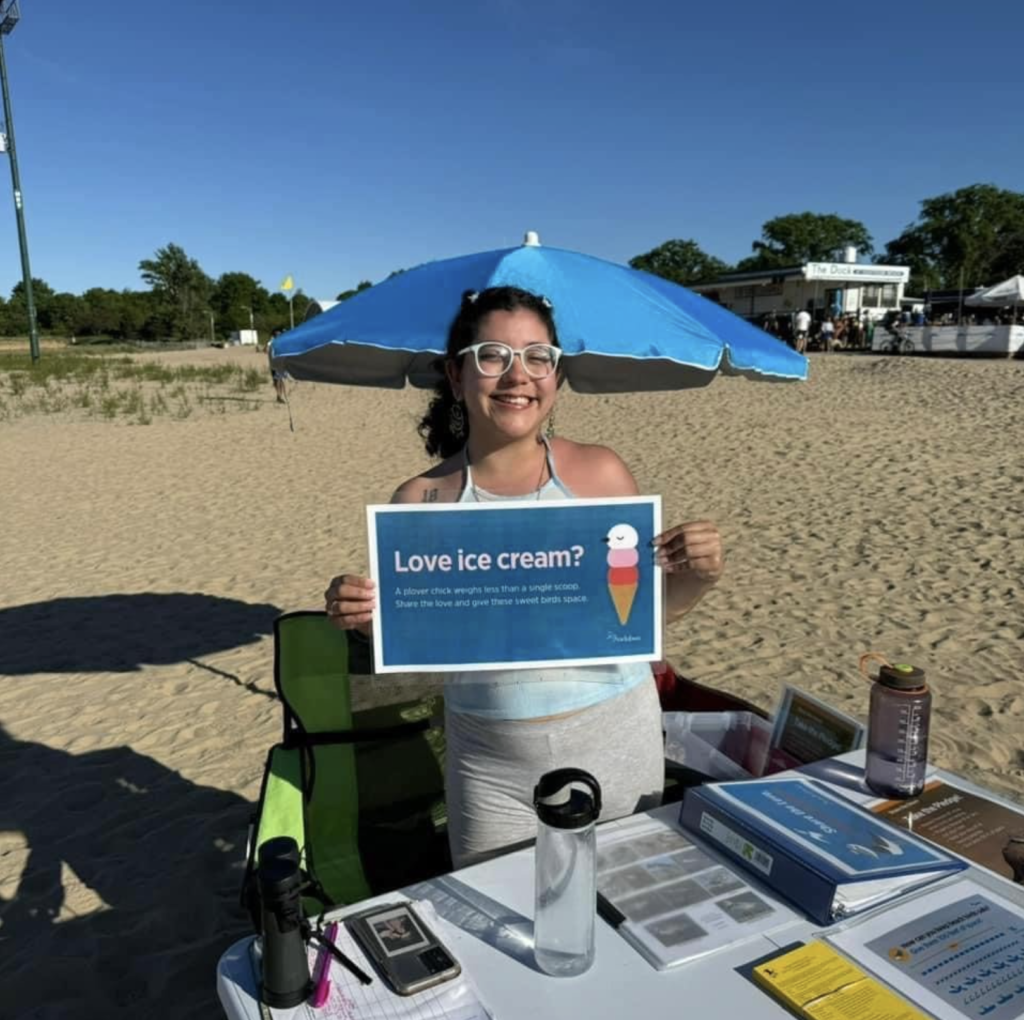
Back in April, I was working as a nanny to my two beautiful nieces and wondering what my next step was going to be. I had graduated from the University of Michigan in 2022 and still hadn’t explored many opportunities in my field. One day while I was giving my nieces breakfast, my mother frantically ran upstairs to tell me that my father had just heard of a summer position on the beach involving birds in some way or another, and that I should apply. If there are a few things that everyone knows about me, it’s that I love birds, I love the beach, and I love to talk! This sounded almost too good to be true, until I did some further research and found the position my father had described.
Piping Plover and Shorebird Outreach Intern. I didn’t exactly know what this position entailed, but spending time on the beach and talking to people about endangered birds sounded like a regular summer day to me, and obviously the job of my dreams. Despite my nerves almost getting the best of me, I applied to what appeared to be the position of my fantasies, and to my absolute delight, I got accepted! Although I initially thought this position was the job of my dreams, my dreams hadn’t even come close to just how fun and fulfilling this position actually ended up being.
From my first week on the beach, I was already getting a ton of engagement from people who wanted to hear all about the Piping Plovers. I couldn’t believe I was actually being paid to yap about birds- something I already frequently do. On top of that, people were actually interested in hearing about them! Before I knew it, people were visiting me at the beach and recognizing me from the various social media posts that mentioned my addition to the team. Some people even asked to take pictures with me, and to my amusement, many beach patrons told me that they endearingly referred to me as ‘beach girl’ or ‘bird girl’. On top of that, I was being supported by a team of great bosses who were giving me the liberty to decide exactly how I wanted to engage the public, and were open to listening to all of my crazy ideas.
Through my time at the beach, I talked to so many more people than I ever would have imagined could ever be interested in hearing about endangered birds on the beach. Every day, I was surprised that I was leaving feeling more fulfilled than the last. I wasn’t only engaging with people who already knew all about Monty and Rose and their history on Montrose like I’d initially assumed I would be, but I was talking to people from Central America and coastal Mexican cities who told me they’d seen plovers in their home countries. I was talking to food vendors on the beach who wanted to know why the beach was closed off in certain sections and subsequently what they could do to help protect the birds. I was talking to kids who didn’t even speak English but were nonetheless drawn in by the pictures of cute birdies that I had on my table.
Not only was I talking to such a vast and diverse amount of people, but I was also finally in a position where I could help reach my own community of Latinos in the city, a group that is so often overlooked in science circles. I was able to speak in my native tongue and it was actually considered to be an advantage versus just a characteristic that I had.
Sure, there were some instances of interacting with creepy men or rude people, but these very seldom occurrences of discomfort on the beach were so far outweighed by the immense love I felt from the Montrose community. From the lifeguards and paleteros working on the beach, to the frequent patrons that were always sure to stop by my table and ask about updates on Imani and crew, who all quickly became my friends, I felt so overwhelmingly accepted and supported on Montrose Beach. Which, admittedly, was something I was nervous about before starting my position. Plus, what other job position would allow me to take a quick dip in the lake on a hot summer day, or spend time birding when the day is slow?
Midway through the summer, essentially all of my close friends and family were asking for updates on the chicks and wanted to be the first to hear of any news with the plovers. These are mostly people who can’t tell a gull from a pigeon and couldn’t care less about birds in general, by the way. I felt so fulfilled to know that I was making a difference, not only at Montrose beach but even in my own circle. I know I had an impact on the plovers, just as much as they had an impact on me. Overall, I couldn’t have dreamed of a position more suited to exactly my interests and passions, and I don’t think there’s any other position where I could have had as much fun as I did.
Forever a plover lover,
Jessica Cortez

